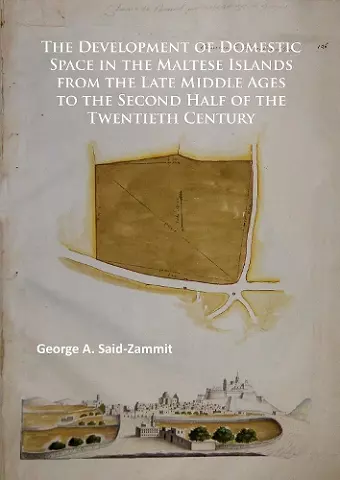The Development of Domestic Space in the Maltese Islands from the Late Middle Ages to the Second Half of the Twentieth Century
Format:Paperback
Publisher:Archaeopress
Published:15th Aug '16
Should be back in stock very soon

This study traces and analyses the evolution of domestic space in Maltese vernacular and ‘polite’ houses from medieval to contemporary times. The houses under review range from humble buildings of modest size, materials and design, like farmhouses or those for the less affluent towndwellers, to buildings of grand design, like townhouses and palazzi. Owing to the complex nature of the Maltese houses a combination of enquires and a variety of sources was necessary to achieve a holistic picture. This included fieldwork in different parts of the islands, extensive research work in local archives, libraries and museums, an analysis of a sample of literary sources, national censuses and works-of-art, as well as methods of spatial analysis (Space Syntax). One of the major achievements obtained in this research concerns the development of the native dwelling. The field surveys and archival research have demonstrated that the evolution of the native dwelling was very much influenced by the political, social and economic changes that occurred locally during the period under review. In particular, it was observed that architectural and stylistic changes in the elite houses occurred at a faster rate to suit fashion, in line with what occurred in other European countries, while changes in peasant houses were slower and more sporadic as these adhered to their vernacular idiom for a longer time. Houses often served as a symbol of class and social status. The dwelling’s size and architectural style, the configuration of domestic space as well as the house furniture and contents were among the main indicators which, between the late Medieval Period and the first half of the 20th century, distinguished a wealthy from a poor dwelling. Class distinction did not occur only between houses, but also within the same building, especially in the elite dwellings. Gender was also another important aspect which directly affected the upper middle and elite Maltese houses, particularly at a time when men and women had fixed roles in society. However, the restricted space by which the lower class houses were normally characterized permitted instead the mixing of genders in work and leisure. A major shift in the relationship between the family and the house occurred in the second half of the 20th century, when the social and demographic changes of this...
ISBN: 9781784913915
Dimensions: 290mm x 205mm x 21mm
Weight: 1880g
392 pages